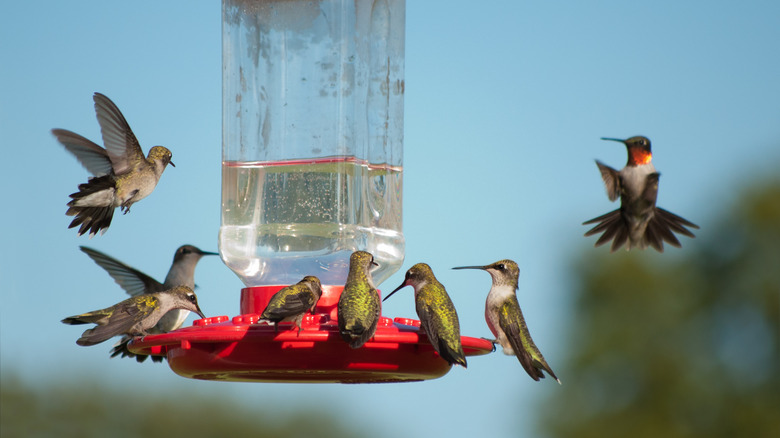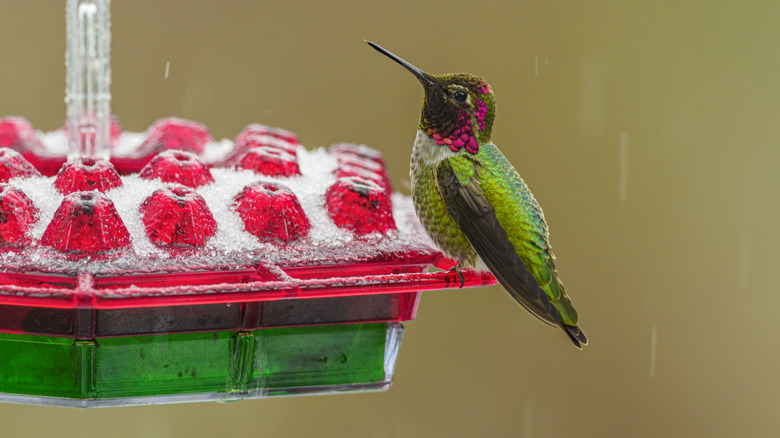The Best Time Of Year To Put Out Your Hummingbird Feeder
No other event heralds the onset of spring quite like the arrival of the first hummingbird in your backyard. Watching one of these tiny jeweled birds flutter around your feeder is a joy to behold. For this reason, it's important to be informed about the best time of year to set out your feeder. This timeframe will vary slightly from state to state, as it depends on a couple of different factors including how the climate of each region influences their migratory pattern. It also depends on which species of hummingbirds are most likely to appear in your area of the country. However, a general rule of thumb is that March is the month to have your feeder prepared and ready to welcome your springtime visitors.
In the Southeastern states, the warmer climate will allow for some hummingbirds to stay all winter long, especially along the Gulf Coast. However, safely cleaning your hummingbird feeder and supplying it with fresh nectar all year can be a big time and cost commitment. If it's impractical to maintain this schedule, then your best choice is to store your feeder over the winter and hang it back up in early March before spring begins to bloom. You may catch the early migrators on their trips north. If you reside in the Northeastern states, you can wait until late March or early April to have your feeder ready.
Set out your feeder before you expect your first visitors
In the Western United States, early March is the best time to set out your feeder for the birds who are making their way into the mountainous areas. Along the coast of California, hummingbird feeders can be available year-round as many of the species stay there for the winter. However, certain varieties head north to Alaska for the breeding season, so you might have success luring them to a feeder in Oregon in late February, which will nourish them on their trek north.
Hummingbirds are great at remembering the past and will return to a feeder that they've visited the year prior. For this reason, it's important to put yours out a couple of weeks earlier than you might expect to see your first visitor. If some of these birds have visited your yard in the past, they'll want to come back to the same spot where they found the delicious nectar before. However, if they come for a visit and your feeder isn't available yet, they'll remember that your location could be unreliable and will search for nourishment elsewhere. The only risk you take in setting out the feeder a little bit early is having to replace some nectar that went unused. This is a minimal cost compared to the risk of losing the chance to entertain hummingbirds for the rest of the season.

